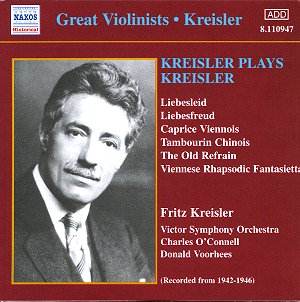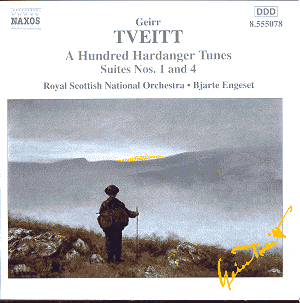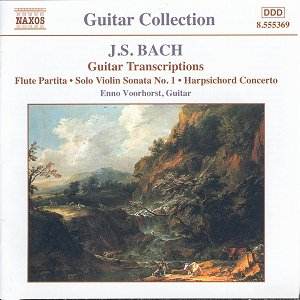 Composer: Fritz Kreisler (1875-1962)
Composer: Fritz Kreisler (1875-1962)
Works: Caprice viennois Op. 2, Tambourin chinois Op. 3, Liebesfreud, Liebesleid, Schön Rosmarin, La gitana, The Old Refrain, Marche miniature viennoise, Rondino on a Theme by Beethoven, Midnight Bells (arr. Heuberger), Londonderry Air (arr. Kreisler), Hungarian Rondo (arr. Haydn), Chanson Louis XIII and Pavane (arr. Kreisler), The Rosary, Stars in My Eyes (From The King Steps Out), Viennese Rhapsodic Fantasietta
Performers: Fritz Kreisler, violin; Victor Symphony Orchestra/Charles O’Connell; Victor Symphony Orchestra/Donald Voorhees; RCA Victor Orchestra/Donald Voorhees
Recording: Recorded 1942-1946, Philadelphia and New York
Label: NAXOS HISTORICAL 8.110947
Fritz Kreisler, an iconic figure in the world of violin performance, left an indelible mark on the musical landscape of the early 20th century. Renowned for his virtuosic technique and lyrical expressiveness, Kreisler’s works are characterized by their blend of classical forms with a distinctly Viennese flair. This collection, featuring some of his most beloved pieces, encapsulates a significant chapter in his storied career, recorded during the twilight of his life. The recordings span from 1942 to 1946, a period marked by both personal recovery and a gradual decline in technical prowess, yet they remain a testament to his enduring artistry.
Kreisler’s interpretation of his own compositions reveals a profound understanding of the emotional and stylistic nuances inherent in each work. In the Caprice viennois, for example, the use of a Celeste adds a charming touch, enhancing the playful character of the piece. Kreisler’s rubato, a hallmark of his style, is particularly evident here, where he deftly stretches and compresses time, creating an almost conversational quality. His performance of the Tambourin chinois stands out for its rhythmic vitality; the tambourine crash punctuates the excitement, while Kreisler’s expressive phrasing invites listeners into a world of delightful spontaneity. The flexibility in tempo during the middle section is a masterclass in interpretative freedom, showcasing his unique ability to balance precision with emotional depth.
Technically, the recordings reveal the frailties that come with age. The slight flatness in his higher register, especially on the E string, is noticeable and serves as a reminder of the physical challenges faced by even the greatest artists. Nevertheless, Kreisler’s command over the instrument remains formidable; his double-stopping in the Hungarian Rondo is both secure and full of character. The orchestral accompaniment, provided by the Victor Symphony Orchestra, while somewhat boxy in acoustic quality, complements Kreisler’s violin with a vibrant palette of colors. The arrangements he crafted for these performances reveal his keen ear for orchestration, utilizing woodwinds and strings to create a lush backdrop for his melodies.
Sound quality is a consideration in these historical recordings, with the engineering reflecting the limitations of the era. Nonetheless, Naxos has done commendable work in transferring these performances, allowing the warmth of Kreisler’s tone to resonate through the recording. The notes by Tully Potter provide valuable context, enriching the listener’s experience and deepening the appreciation for Kreisler’s contributions to the violin repertoire.
While these recordings may not encapsulate the pinnacle of Kreisler’s earlier brilliance, they undeniably capture the essence of a great artist at a reflective stage of his life. Each performance is imbued with a warmth and sincerity that showcase his unique interpretive voice. The slight imperfections serve to humanize the recordings, allowing them to resonate with listeners on a deeper level. This collection stands as a poignant reminder of Kreisler’s legacy, revealing not only the technical mastery that defined his career but also the profound emotional depth that continues to inspire generations of musicians. The beauty of these performances lies not just in their technical execution but in the heartfelt expression that Kreisler brings to each note, solidifying his status as one of the most influential violinists of the 20th century.



